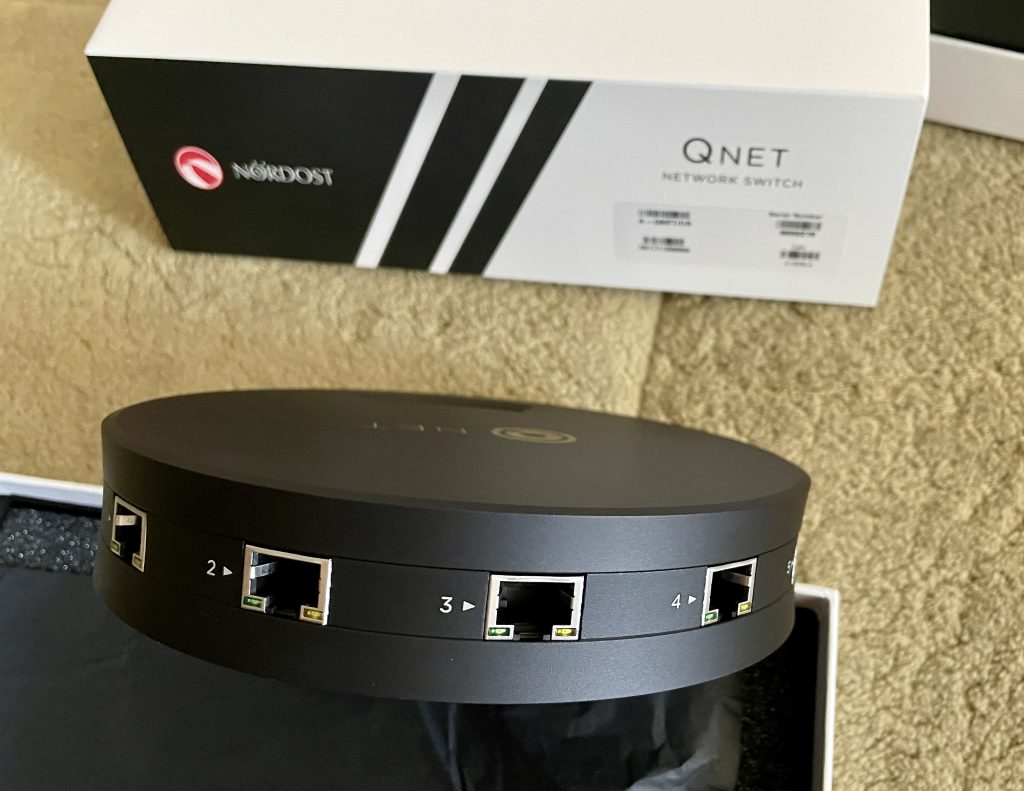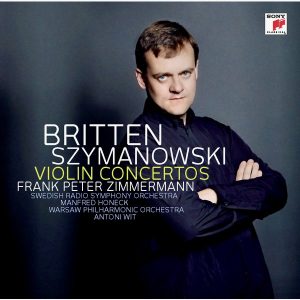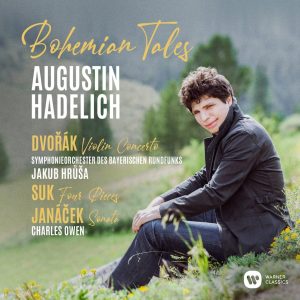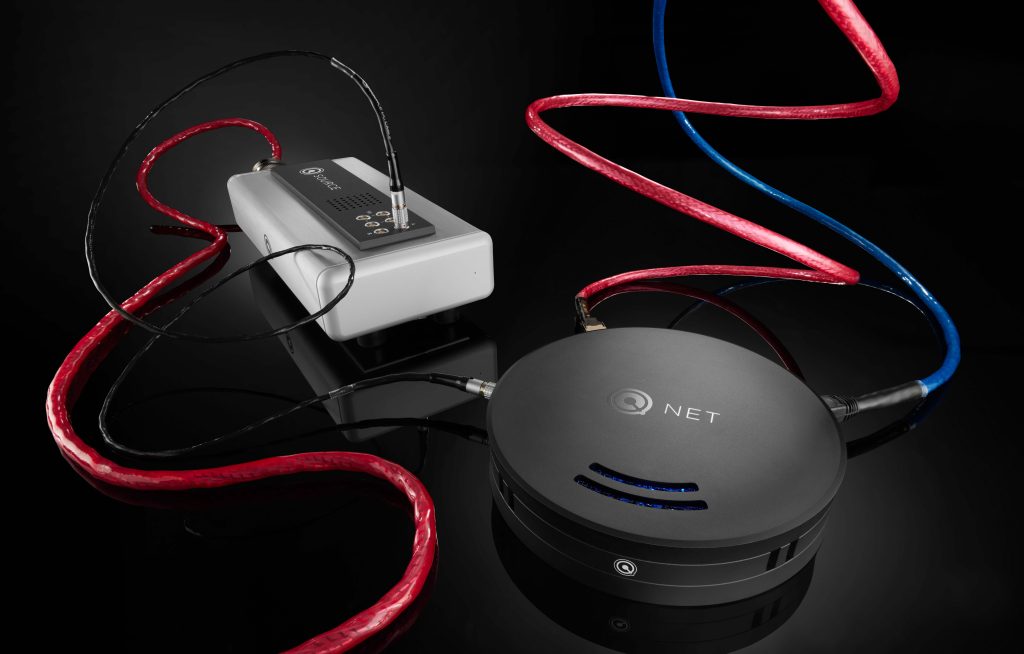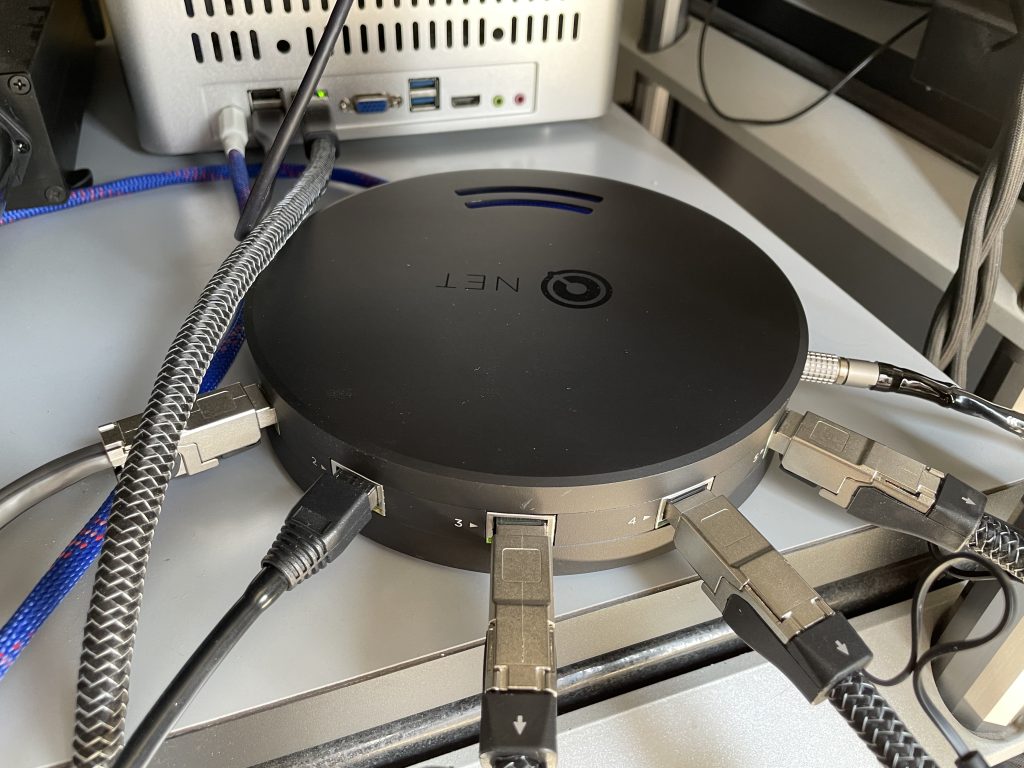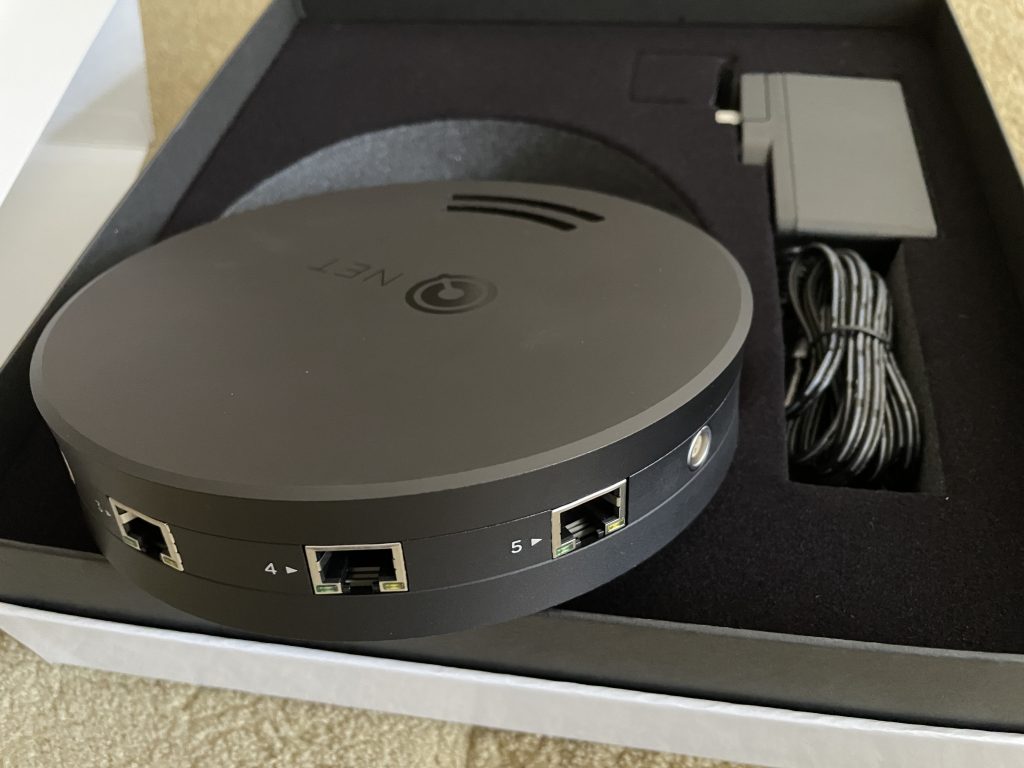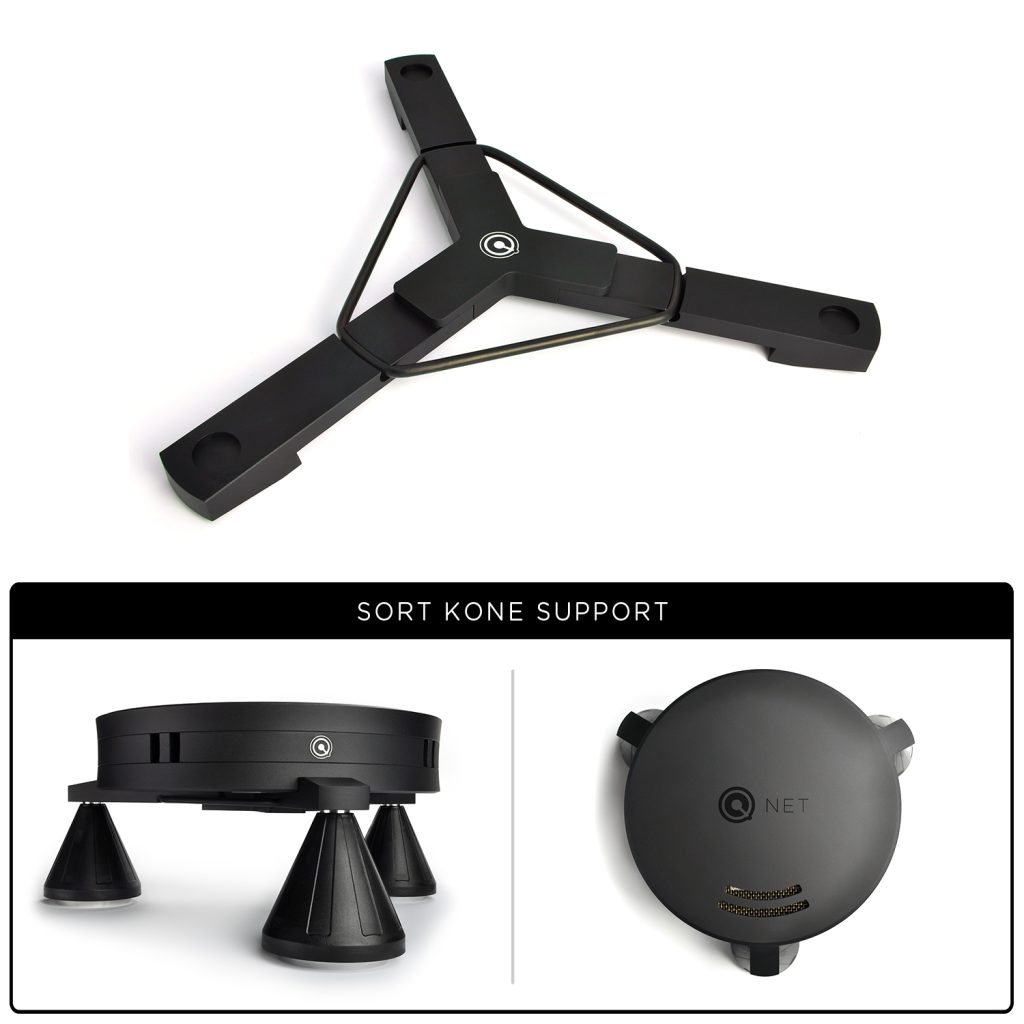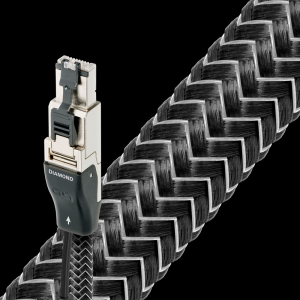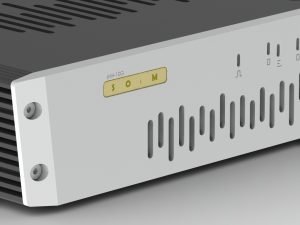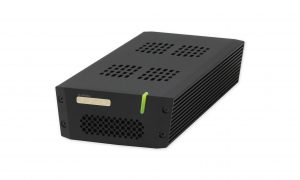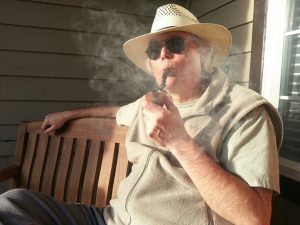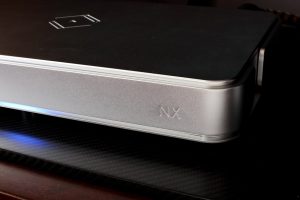The natural order of things is to start low and aim high. Buy a low-cost product; get acquainted with it, even as you scan the horizon checking out options; become dissatisfied; then pull the trigger. That's what we do: the avid audiophile never stays put very long. Sure, you can jump-start the journey by handing a dealer a fat check at the git-go, but you'd miss the experience of the journey. And your chums will likely look askance at such bad form.
I can still recall the shock of delight upon installing my first hi-end switch. When the EtherStream Network Switch from Fidelizer (MSRP $395), an audiophile boutique based in Thailand, was offered for review I was skeptical. "Um, sure, OK, I'll try it." It was like blasting off from ground zero to a medium-altitude orbit. Then booster stages were engaged, as I rotated through a number of linear power supplies.
Which One?
Although this could have been a stopping point, audiophile-grade Ethernet switches have been in the news lately and, in a blink, the landscape is peppered with them. I was feeling the urge, and there was room to elevate. The question was, which one? Based on my very positive assessment of the Nordost QSOURCE LPS (which I acquired), the obvious choice to audition was their new QNET Ethernet Switch.
Replacing the EtherStream Switch
After the QNET (and its DC umbilical) was given 7-10 days for burn-in, I brought up the Szymanowski Violin Concerto #1 with Frank Peter Zimmermann soloist and Antoni Wit conducting the Warsaw Philharmonic Orchestra (SONY FLAC 44.1kHz 16-bit, streamed from Qobuz). The Szymanowski concerto, composed in 1916, resembles other late romantic period works by Schonberg, Scriabin, and Berg. It's a lovely concerto deserving of more frequent programming.
2D Space Becomes 3D
Interesting… It was clearly a move forward with small improvements across the board, and one major shift. The transformation of soundstage depth was extraordinary, as flat space became deep. The impression of 3D was so great it caused me to question, could this could be an artifact? The QNET put the listener in a reverberant venue, where woodwinds toot softly close to the front wall, while the other sections of the orchestra pushed out and back on either side. The violin enters up front at approximately the plane of the component racks. These image locations were unambiguous, yet still far from being etched. The width of the stage showed modest, if any, improvement.
A haunting, rhapsodic melody unfolds for several minutes, with the solo violin playing entirely in the treble range. Mr. Zimmermann is so good at this material, which could be problematic in lesser hands. A big crescendo with bass drum then fills the room.
Next, I cued up the Dvořák Violin Concerto, with Augustin Hadelich as soloist and Jakob Hrůša conducting the Symphonieorchester des Bayerischen Rundfunks (Bohemian Tales, Warner Classics 527476, FLAC 48kHz 24-bit). This has been my go-to title for reference-level streaming for quite a while with splendid performance and sound, surely qualifying as a Super Disc. Again, the depth of the stage catches my ear, although it's not quite as deep nor as discretely layered as the Szymanowski concerto. The suspicion of it being an artifact receded.
Soundstage and Atmosphere
Over the last months I have become acquainted with the way the QSOURCE LPS delivers atmosphere, low-level resolution, and timbral finesse. It was striking how the QNET worked in similar areas. Plus there was a multiplier effect, with the QSOURCE/QNET in tandem excavating dynamic shadings and details at a finer level, advancing Hadelich's violin to the most credible I've heard it streamed.
One little curiosity: Reading over my QSOURCE review, I commented about the width, how the orchestral corps filled out most of the side-to-side acreage between the speakers. What caught my ear with the QNET was what happened to the depth, how the sound layered from the audio racks to the front wall.
Cosmetics and Design
I'll spend a moment on cosmetics because I've never had a circular component before. The QNET is striking; it doesn't look like other Nordost QRT products. The exterior is very slick looking, a fine example of industrial design. Its dimensions and weight are compact, and the quality of its brushed matte black aluminum chassis is excellent. I'll let the website do the talking about what's inside:
Externally, the QNET is manufactured using an extremely durable aluminum housing. This housing not only acts as a heat sink and shield for the device, but also provides physical separation for the five, independent ports, each accommodating an 8P8C (RJ45) connector. The physical separation of each of these ports is a critical and unique design element, ensuring minimal crosstalk and interference within the device.
Each port on the QNET is optimized for its application. Three of the five ports are auto-negotiated 1000BASE-T (1 Gbps) capable, which should be used for the router and other generic network devices. The remaining two ports are fixed to 100BASE-TX (100 Mbps), a speed at which internal noise reduction is possible, making these ports best used for primary audio servers/players or external media sources.
There are consequences stemming from the circular design. For one, the RJ45 connectors are arrayed in an arc. That means the Ethernet cables plug in at different angles, not straight on. You will see a blinking green LED next to the active 1000BASE-T ports, indicating the higher speed is running. The 100BASE-TX ports have a yellow light to show the lower speed is running.
Installation
There's a wall-wart in the box, but I'd strongly recommend not using it. Instead, procure a linear power supply to obtain the very best power delivery. As mentioned, the QSOURCE LPS creates a fine synergy. I set one of the QSOURCE's adjustable outputs to 9 volts, then ran a Premium DC cable to the QNET switch. When you order the QNET you specify the termination and length of the DC cable (the cable is not included with the QNET and available at additional cost). Both QSOURCE and QNET were connected to QKORE Ground Units. BTW: the QKORE can plug into any QNET port, no matter the speed.
QNET Stand
The QNET comes with a leather protective pad to place underneath and prevent scratches. There is an optional QNET Stand (available at additional cost). The fit-n-finish of the triangular stand matches the QNET itself and is an elegant design solution to support it. The stand uses a stretchy polymer ring to apply tension to its three legs and harness the QNET in place. Each leg of the stand has a depression to receive the point of a Sort Kone.
If you already own Sort Kones, you know what they do. The Stand plus Sort Kones isolation support is quite effective at canceling resonances, relaxing the sound, and promoting resolution. I had a feeling the warmer tone of the Bronze Ceramic Sort Kone would be welcome. Alternately, you can try the more dynamic and resolving Titanium Ceramic.
In combining the QNET, QNET Stand, and Nordost Sort Kones, listeners will achieve a virtually noiseless digital experience, separating the music even more noticeably from its background.
That's what the press material said. The QNET Stand ($299.99) and Sort Kones (BC: $169.99/each) advance the sound to a surprising degree.
the QSOURCE gets Hot
In operation, the QNET gets mildly warm. The QSOURCE powering it, however, got hot enough after being on a day that I was concerned, especially because powering the Fidelizer EtherStream it stayed cool. What's up? I asked for clarification:
Linear power supplies (LPS) generate quite a bit more heat than today's ubiquitous switched-mode power supplies (aka SMPS), and the QNET has no less than 6 LPSs inside. The trade-off for having a very quiet, high-quality power distribution network inside the switch, apart from taking up more physical space, is essentially more heat. 99% of the switches out there use SMPSs inside for efficiency, compactness and lower cost, including most of the so-called "audiophile" switches. The end result is a cooler, yet noisier device that however does not perform at the same level as the QNET.
Performance-wise this shouldn't be a concern though, as both the QNET and the QSource have been conceived to use their respective cases as a heatsink by design—not unlike several power amplifiers—and there are safety mechanisms in place, for example the QSource will even shut itself down if it's too hot internally. We do state in the manual for both devices that they should be placed in well ventilated areas for that very reason.
Conclusion
Since you're reading this review, I'd wager you've dealt with some of the quirkier aspects of music streaming. It's the same learning experience once again: anything that comes near the signal—every piece in the streaming chain, including those you intuit can't possibly matter—makes a difference. Same as everything else in hi-end audio.
The skeptics will tell you the Ethernet switch can't possibly matter. Pay them no mind. The general community is rapidly coming around to their importance. Simply try one for yourself. Depending on how revealing your system is, the difference will pop out to a greater or lesser extent. When Nordost released their QNET Ethernet Switch, I was immediately interested. I suspected it would impact the sound in similar ways as their QSOURCE Linear Power Supply, and heard it do exactly that. Both components are particularly good at resolving atmosphere, low-level detail, and timbral finesse. The QNET is amazing at reproducing space and dimension.
You might think, given the effects are similar, is it redundant to get both? The short answer is all of the effects compound and you can never get too much of these qualities. Is one of them better or more important than the other? Really hard to say. But the question is moot; using them in tandem brings you better sound.
QNET Ethernet Switch
Retail: $3199.99
QSOURCE DC Cable
Retail: $299.99/m
Premium QSOURCE DC Cable
Retail: $339.99/m
QNET Stand
Retail: $299.99
Sort Kones
BC Retail: $169.99/ea
TC Retail: $424.99/ea
Nordost




